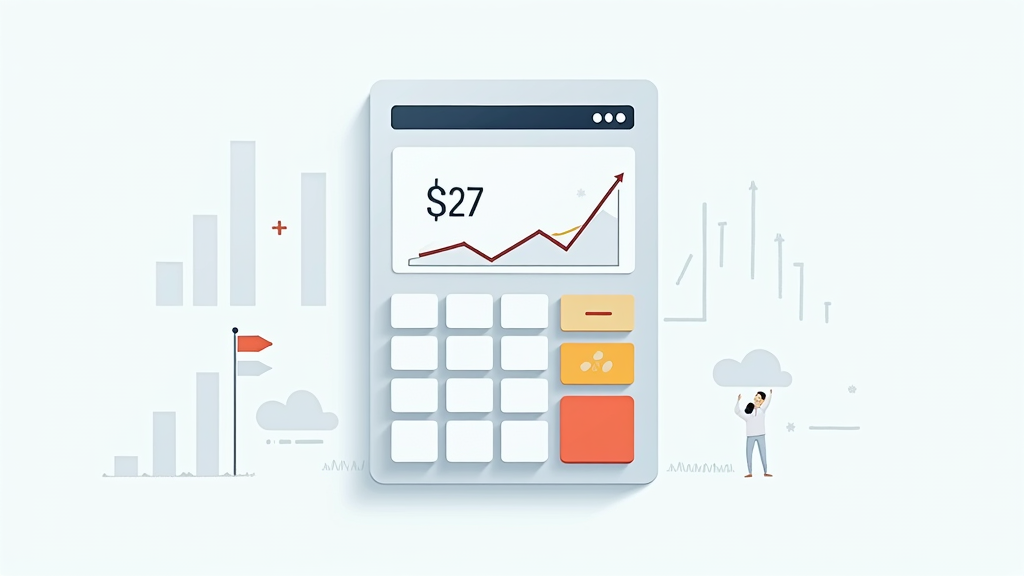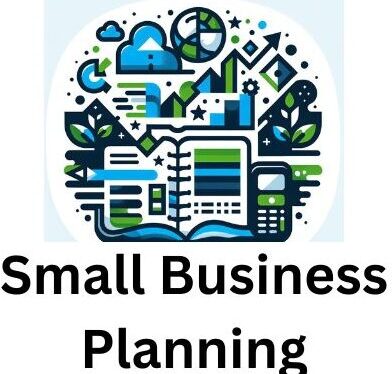Estimating startup costs for a small business can feel both exciting and a bit daunting. There is a mix of expenses to plan for, from everyday operating costs to one-time setup investments. In this article I will walk you through how to estimate these costs effectively. This upfront work helps you gain confidence in your financial planning and set realistic expectations as you move forward.

Understanding Startup Costs for Small Businesses
When starting a small business, it is very important to know which expenses you are likely to encounter. Startup costs consist of many different elements that together form your financial foundation. Often these include legal fees, equipment purchases, marketing expenses, and more. Breaking these down into manageable categories gives you clearer insight into your cash flow needs and helps you prepare for potential challenges. Accurate cost estimation lets you budget effectively, avoid surprises, and make well-informed decisions. Even if you are skilled in your industry, every business is unique. That is why preparing a breakdown of all anticipated expenses before making big commitments is really important.
Getting Started with Cost Estimation
Before you jump into the nitty-gritty of numbers, it is wise to create an outline of potential expenses. I usually recommend beginning with two broad categories: one-time startup costs and ongoing operational expenses. One-time expenses include items necessary to establish the business such as licensing, equipment, and initial marketing. Ongoing costs cover rent, utilities, wages, and supplies needed to keep operations running day in and day out.
Once these categories are set, the next step is to gather quotes, do some homework, and adjust your figures based on realistic market rates. Replacing assumptions with data from local vendors, online cost guides, and industry experts can make all the difference. Below is a practical approach to get you started:
- List Fixed Costs: Write down all one-time investments such as equipment, legal fees, and registration costs.
- Estimate Variable Costs: Identify monthly or recurring costs like utilities, supplies, and marketing activities.
- Research Local Rates: Understand that local market rates for leases, wages, and services can vary. Local research is valuable.
- Create a Contingency Fund: Set aside an extra percentage to cover unexpected expenses.
- Review and Revise: Regularly check your estimates as planning develops and market prices change.
This process not only helps develop a reliable estimate but also builds confidence as you shape your financial plan. Your effort here will prepare you for discussions with potential investors or lenders, and it sets a realistic performance benchmark for your business.
I would strongly recommend that a complete Business Plan be developed. A full Business Plan is necessary when speaking to lenders and potential investors. The information I have supplied on this site will give you the information necessary to start the process. There are software products available that will make the process easier. One of the best that I have seen is a product called LivePlan. It is very comprehensive and user friendly to novices. A free trial is also offered. If you would like additional information about LivePlan please click on the link.
Common Hidden Expenses and Considerations
Even the best research might miss certain costs if not examined closely. Hidden or underestimated expenses are common pitfalls for new entrepreneurs. A careful review of each cost category can help avoid surprises later. Consider these key areas:
- Permits and Licenses: Fees for permits vary by industry and location. Contact your local business office to verify legal requirements.
- Technology and IT Infrastructure: Today, most businesses need a reliable computer system, internet service, and sometimes custom software. These costs can add up quickly if not planned for.
- Insurance: Business insurance protects your venture from unforeseen issues. Costs depend on your industry, location, and size.
- Marketing and Branding: Whether it’s designing a logo or launching a small advertising campaign, initial brand building can incur unexpected costs. I always check in with vendors to get complete breakdowns.
Many first-time entrepreneurs may overlook permit fees or IT infrastructure costs, which can delay a launch if not managed properly. Budgeting a small reserve for these hidden items can safeguard your venture from unexpected delays or financial strain.
Advanced Tips and Tricks for Estimating Costs
Once you are comfortable with your initial estimates, using more advanced strategies can further refine your budget. Instead of relying solely on rough estimates, consider these methods:
Use Historical Data: Look into case studies or reports from similar businesses to track down common spending trends. This information can help adjust your own figures.
Create Detailed Projections: Break expenses into monthly or quarterly segments. Mapping out costs over time provides a clearer picture of cash flow needs and seasonal variations.
Take Advantage of Software Tools: Business planning software offers templates and financial calculators that make it easy to visualize expenses over a set period.
Set Aside an Emergency Fund: No plan covers every unforeseen cost. Allocating extra funds in your startup budget ensures that minor hiccups do not derail progress.
These advanced tips shift your planning from guesswork to a structured, data-driven approach. They help you review expenses carefully while ensuring no crucial cost is overlooked.
Key Expense Areas for New Ventures
Understanding where your money goes is essential. I like to break down expenses by major areas. This method simplifies planning and highlights opportunities to reduce costs without sacrificing quality. Common expense areas include:
- Facility Costs: These cover rent, renovations, deposits, and sometimes utilities. Whether operating from home or renting office space, facility expenses are often a large share of startup costs.
- Equipment and Inventory: Depending on your business model, you may need computers, point-of-sale systems, or specialized tools. Initial inventory might also represent a significant upfront investment.
- Marketing and Advertising: Pre-launch investments in branding, such as website development, promotional materials, and local event sponsorships, help set the stage for future growth.
- Professional Fees: Payments to lawyers, accountants, and consultants are necessary to ensure you meet legal requirements and have a sound financial foundation.
- Operational Reserves: This is money reserved for ongoing expenses once the business is operational. A healthy reserve protects against cash flow problems during slower periods.
By clearly outlining these areas, you are in a better position to prioritize spending and make adjustments when needed.
Frequently Asked Questions
Below are some common questions entrepreneurs have when estimating startup costs:
Question: How can I accurately predict my monthly expenses?
Answer: Begin by categorizing expenditures into fixed and variable costs. Use historical data from similar ventures and refine your numbers as you learn more about your specific market.
Question: What percentage should I set aside for unexpected costs?
Answer: A contingency fund of about 10-20% of your startup costs is often recommended. This buffer helps cover sudden changes in material costs, regulatory fees, or market shifts.
Question: Should I overestimate or underestimate my costs?
Answer: Overestimating expenses is generally safer. Adding extra funds can help manage unforeseen costs without jeopardizing operations.
Question: When should I update my cost estimates?
Answer: Update your estimates regularly. As deals finalize, vendor prices change, and market conditions shift, revisiting your numbers keeps your budget realistic.
Wrapping Up
Accurately estimating startup costs is a key step in launching a small business. Through detailed research and careful planning, you can build a budget that matches your business goals and provides flexibility for unexpected challenges. By breaking down your costs into clear categories and using both basic and advanced tactics, you create a financial blueprint that is easier to manage and adjust over time.
This planning phase is a collaborative effort. Discussing numbers with business partners, advisors, and early investors can reveal hidden costs and validate your assumptions. The benefits of precise financial planning go beyond the numbers and help pave the way for a smooth, focused launch. With an accurate budget in place, you are better prepared to secure funding, manage cash flow, and move forward with confidence.
Start building your financial blueprint today by gathering estimates, researching local markets, and fine-tuning your budget. A well-prepared plan is not only about crunching numbers—it is about setting up a strong foundation for sustainable growth in a competitive market.
Here’s a little transparency: Our website contains affiliate links. This means if you click and make a purchase, we may receive a small commission. Don’t worry, there’s no extra cost to you. It’s a simple way you can support our mission to bring you quality “Business Planning content.”

This article really simplifies the daunting process of estimating startup costs. I appreciate how it breaks everything down—from fixed and variable expenses to creating a contingency fund and using advanced tools like LivePlan. It reminds me that careful planning isn’t just about crunching numbers—it’s about building a solid foundation for future growth. What’s one cost area you think is most underestimated in startup planning?
Thanks for the comment. In a manufacturing business the most underestimated cost is inventory. The next is accounts receivable. It’s easy to assume that customers will pay on time but many times that is not the case.
This is a super helpful guide—estimating startup costs can be one of the most overwhelming parts of launching a small business. I like how you broke everything down into categories and provided examples; it really makes the process feel more manageable.
I’m curious, what would you recommend for entrepreneurs who are launching service-based businesses with minimal overhead—should they still go through every category, or focus on just a few core areas? Also, do you have any tips for handling unexpected costs that pop up after the business is already running?
Great resource for anyone in the early planning stages!
Thanks for the comment. Even if you are starting up a service based business it makes sense to review all of the categories as it will help minimize surprises. Once the business is already running I would recommend getting a line of credit. It doesn’t cost anything if you don’t use it but it is great to have when you need it!